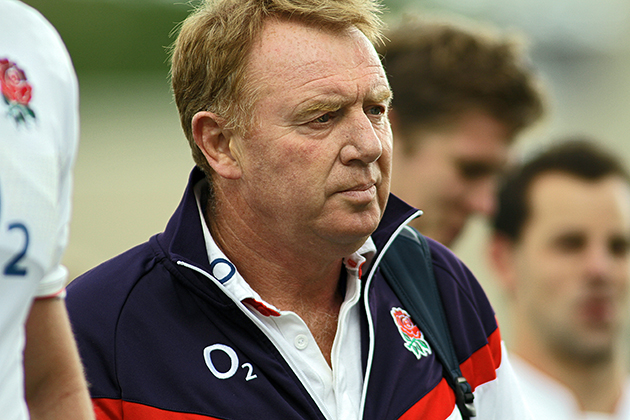Simon Hardy, one of the world’s top throwing specialists, explains the hooker’s chief craft
“Getting your hands right is the No 1 rule for throwing in,” says Simon Hardy, a World Cup-winning coach with England who now works with the likes of Bath, Harlequins and Pau on a consultancy basis. “Each player is different, so find what works for you.” Here are his top tips for throwing into a lineout…
1. GET YOUR HANDS RIGHT
“For a right-hander, have ‘Gilbert’ on top (seam at 2, 4, 6 and 8 o’clock). Right hand towards back of ball, fingers over top of seam, thumb relaxed. Left hand slightly forward of right, fingers relaxed, thumb under ball. To throw, snap elbows and roll hands out. Hands are together, pointing at the target.”

Right place: Getting your hands in the correct position is key. Photo: Getty Images
2. SIT ON A STABILITY BALL
“The aim here is to isolate your upper body, using your core, arms and hands to throw. Technique: sit tall, chest up, hips up. Chin off your chest. Snap your elbows and roll the hands out. For a progression (adding difficulty), use a heavy ball or use only one foot to stabilise yourself.”
3. LIE ON A STABILITY BALL
“Aim: general use of all muscle groups and coordination of throwing action. Technique: hips up, pull through the abs, release ball above the head. Lift chest up after throw. In a game a throw isn’t an isolated action so for the progression, throw and stand to catch the ball.”

Having a ball: Tom Youngs works on his technique in front of Simon Hardy. Photo: Getty Images
4. INTRODUCE A WOBBLE BOARD
“Now stand and throw from a wobble board. Aim: to develop good posture and keep weight on the balls of your feet. Technique: stay tall, lift hips and chest up, flex your knees (don’t bend them), push hips forward. Progression: once you’re staying on the board, throw longer and faster.”
5. STANDING THROW TO TARGET
“Aim: to develop understanding of release points and speed and shape of the throw. Technique: feet square, hips and chest up, chin off chest. Knees relaxed, weight on balls of feet. Hands up, step forward after throw. Progression: smaller targets or throw through a hoop between you and target.”

Target practice: New Zealand work on their lineout drills. Photo: Getty Images
6. THROW INTO A LINEOUT
“Aim: to develop understanding of speed of jumpers into the air to improve timing of throw. A. SPEAK to yourself as you come to touchline. B. Set up half a step behind line and SEE your throw. C. SHOOT. Use a trigger word to focus attention. Progression: add opposition, time constraints, noise, etc.”
WHAT YOU COULD DO
- The 95% rule. Spend 95% of your time on practice. On average there are 15 throws in a game, so players should make 285 throws a week.
- Copycat. Watch good throwers who have a similar style to you (whether at your club or on TV).

World Cup winner: Simon Hardy was part of England’s 2003 back-room team. Photo: Getty Images
- Fact not feel. Record your best throws in a ‘confidence diary’ or on a phone, so you can see your improvement. In his first season at Bath, Tom Dunn recorded 6,000 throws in an exercise book.
- Ask yourself the right questions. Why was that a good throw? How did it feel? Don’t analyse a bad throw, just bin it. It’s about positive reinforcement.
- Use consequence drills to perform under pressure. Eg, hit the target ten times in a row before you finish.
This article first appeared in the April 2017 issue of Rugby World magazine. For the latest subscription offers, click here.






